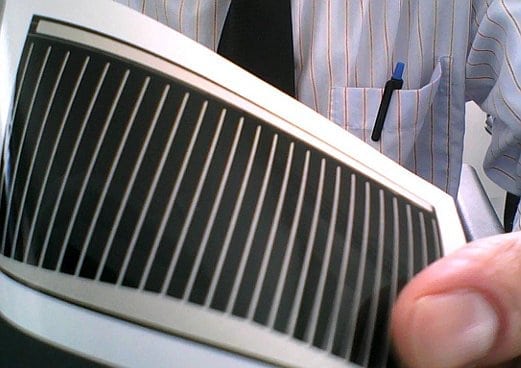
A power conversion efficiency (PCE) of over 13% has been accomplished for single-junction polymer solar cell (PSCs) through the preparation of novel donating materials and interfacial engineering (surface modification). The interfacial layer is essential for improving charge extraction to the electrodes, avoiding non-ohmic contact losses, suppressing recombination, and exaction quenching of the charge carrier at the interfaces.
However, due to the relatively low charge mobility, most devices with high performance are made by very thin interlayers (2-10 nm). This is a significant restriction in large-scale processing methods for flexible substrates. Among the n-type solution-processed metal oxides based interfacial materials used in inverted PSCs, zinc oxide (ZnO) is a promising candidate due to its well-adapted energy level for electron extraction from the fullerene derivatives. In addition to its physical and chemical stability and tunable optical properties. However, due to its relatively low conductivity, pure ZnO is not appropriate to form a thick layer, which is not applicable to large-scale roll-to-roll processing. So it is necessary to improve the conductivity of ZnO by various methods to obtain a thickness-insensitive ZnO cathode buffer layer.
Recently, professor Yiwang Chen and his collaborator prof. Licheng Tan, together with his Ph.D. candidate Miss Yilin Wang from Nanchang University, China reported the highly stable Al-Doped ZnO by ligand-free synthesis as general thickness-insensitive interlayers for organic solar cells.
One of the available methods is to prepare metallic element-doped ZnO with high conductivity by doping the main group elements, such as aluminum (Al), gallium (Ga) and indium (In). This can adjust the energy level, optical and electrical properties of ZnO, subsequently improving the corresponding device performance. The doping of the main group-III elements can effectively passivate ZnO surface traps since the doped elements can replace Zn sites and serve as n-type dopants to generate free electrons. The most extensive Al-doped ZnO (AZO) is easy to achieve and possesses higher conductivity, which can be utilized as thickness-insensitive ETLs in large-scale roll-to-roll production.
In this work, highly conductive and surfactant-stable AZO NPs have been prepared by a colloidal synthesis procedure at low temperature. This involves stabilization by surfactant-aid including ethanolamine (EA), ethylenediamine (EDA), diethylenetriamine (DETA) and triethylenetetramine (TETA). Due to strong intermolecular hydrogen-bonding interactions between AZO NPs and the amino groups from surfactants, the inevitable aggregation was suppressed and the surface defect sites were passivated. The existence of electron transfer from the nitrogen of the amino groups to the zinc of AZO led to a dramatically increased electrical conductivity.
A homogeneous current intensity value up to ~2200 pA for AZO tread by DETA was characterized by conductive atomic force microscopy (C-AFM). This was more superior than that of the reported sol-gel synthesized AZO with the assistance of EA surfactant (refer to 170.7 pA). An optimal power conversion efficiency of 8.6% was achieved with 35 nm AZO-DETA as an electron transporting layer in the inverted polymer solar cells based on PTB7-Th:PC71BM. The device maintained 8.2% efficiency with a thick interlayer over 80 nm and excellent storage stability. Furthermore, non-fullerenes solar cells based on PBDB-T:ITIC with AZO-DETA (80 nm) yielded the best device efficiency of 10.7% and kept up prominent PCE exceeding 10% even with a thicker interlayer (95 nm).
The highly conductive and surfactant-stable AZO NPs by colloidal synthesis at low temperature may open new opportunities for roll-to-roll fabrication of thickness-insensitive ETLs for inverted PSCs.
These findings are described in the article entitled Highly stable Al-doped ZnO by ligand-free synthesis as general thickness-insensitive interlayers for organic solar cells, published in the journal Science China Chemistry. This work was led by Licheng Tan & Yiwang Chen from Nanchang University.








